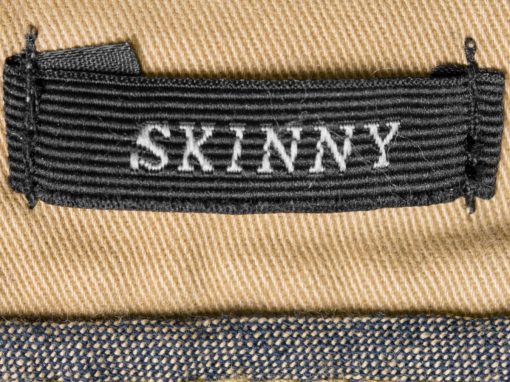The US Federal Circuit has given a decision that blocks a potential form of “evergreening” that pharmaceutical companies might have used to prevent launch of generic versions of their drugs through asserting later-filed method-of-use patents for the drug.
Background – Skinny Labelling Enacted by the Hatch–Waxman Act
In 1984, the US Congress introduced a law called the Drug Price Competition and Patent Term Restoration Act, or the “Hatch–Waxman” Act after the two sponsors of the bill: Representative Henry Waxman and Senator Orrin Hatch. This legislation has been credited with launching the generic industry in the US, as it established a regulatory system for these cheaper products to operate under.
To speed up market entry of generics of drugs for multiple indications, the Hatch–Waxman Act allows generic drug companies to seek US Food and Drug Administration (FDA) approval for a generic product before patents for the relevant brand-name drug have expired,
Thus the Hatch–Waxman Act has given rise to the “skinny label,” also known as a “carve-out” or a “section viii statement.” This is a widely used statutory provision adopted in the Hatch Waxman Amendments that allows manufacturers of generic versions of drugs to come to market notwithstanding a method-of-use patent covering an aspect of the reference listed drug (RLD) labelling by removing that patent-protected use from the labelling of the generic drug. The process of applying for such a drug with a “skinny label” involves the filing of an Abbreviated New Drug Application (ANDA) with the FDA.
The Case Involving an alleged Infringing Drug with a “Skinny Label”
The case in question here is H. Lundbeck A/S v. Lupin Ltd., Nos. 2022-1194, 2022-1208, 2022-1246 (Fed. Cir. Dec. 7, 2023) (“Lundbeck v Lupin”)
Lundbeck’s patents on vortioxetine (marketed as “Trintellix”) as well as methods of using the drug to treat major depressive disorder (“MDD”) have expired.
However, Lundbeck holds newer patents claiming additional methods of use, including U.S. Patent No. 9,278,096 (“the ‘096 patent”), which claims using Trintellix to treat patients who previously took other antidepressants but ceased use due to sexual side effects, and U.S. Patent No. 9,125,910 (“the ‘910 patent”), which claims treating MDD patients’ cognitive impairment with Trintellix.
Consequently, Lupin, a generics manufacture filed ANDAs seeking approval for only the initial approved use of vortioxetine to treat MDD, i.e. not for the use of vortioxetine to treat patients who previously took other antidepressants but ceased use due to sexual side effects, or to treat MDD patients’ cognitive impairment with vortioxetine.
Lundbeck alleged that Lupin’s ANDAs infringed the ‘096 and ‘910 patents because vortioxetine would likely later be prescribed for the uses defined in these patents and thus approval of the ANDAs should be blocked. Lundbeck also alleged that the skinny-label serves as an inducement to doctors to prescribe the drug off-label in a way that infringes the ‘096 and ‘910 patents.
Relevant Provision of 35 U.S.C.
35 U.S.C., i.e. the US Patent Act does define a form of patent infringement that consists of filing an ANDA with the FDA seeking to manufacture a drug covered by someone else’s patent.
However, this section, 35 U.S.C. § 271(e)(2)(A) limits that infringement to circumstances where “the use […] claimed in a patent” is the use that the ANDA applies to, not simply any use for which the drug might be prescribed in future.
Thus the Federal Circuit largely rejected Lundbeck’s arguments and found that filing the ANDA in this situation cannot constitute infringement under Hatch–Waxman with the result that ANDA applicants may use section viii statements to carve out patented methods of use and obtain FDA approval for only non-patented uses.
In particular, the Federal Circuit found that a manufacturer of a generic drug does not infringe if it has “carved out” all sections of the label of the patented drug (e.g. vortioxetine) relating to the patented method of treatment. This is still the case if doctors could use their background knowledge to issue “off-label” prescriptions for the patented use. The reasoning is that allowing inducement to be found in such a situation would be contrary to the intention of Hatch–Waxman because it would indefinitely delay launch of generics after compound patents expire.
Thus, overall, the court ruling blocks a potential form of “evergreening” that pharmaceutical companies might have used to prevent launch of generic versions of their drugs through asserting later-filed method-of-use patents for the drug. This ruling would also appear to hamper drug companies to protect their patented new uses for drugs they have developed as on the face of it this ruling opens the door to allowing infringement through off-label prescriptions for the drug.
Method of Manufacture
Finally, there is a sting in the tail, the Federal Circuit sided with Lundbeck regarding claims for a method of manufacture of the drug. Here the appeal focused on interpreting the term “reacting”. Thus a method of manufacture of vortioxetine remains protected and thus might be enough to prevent entry of generic vortioxetine to the marketplace.









